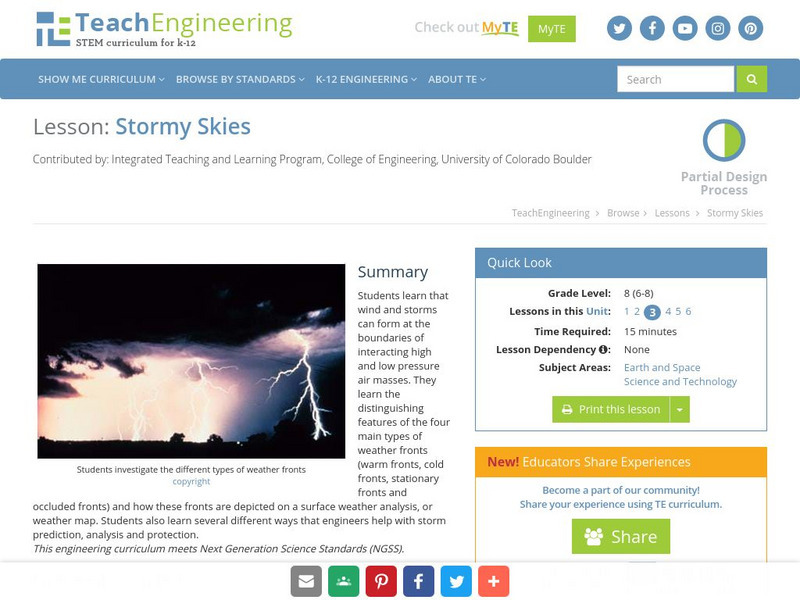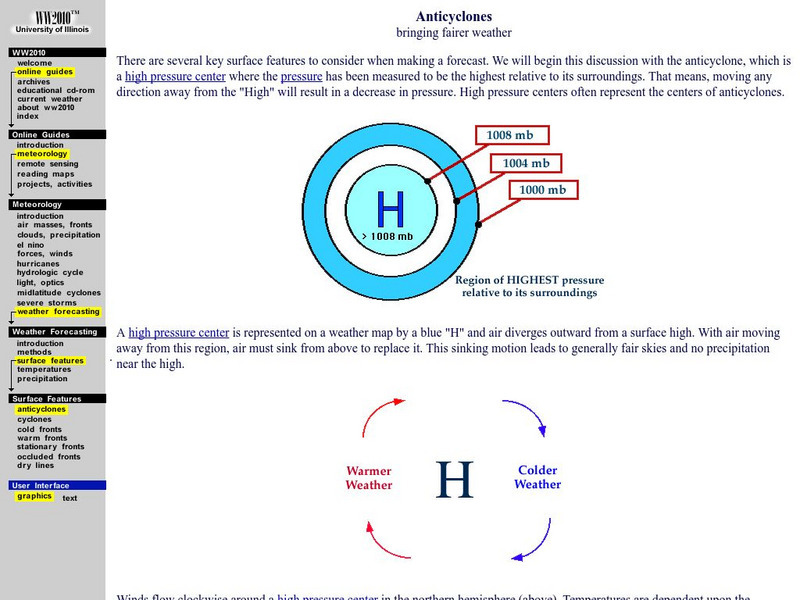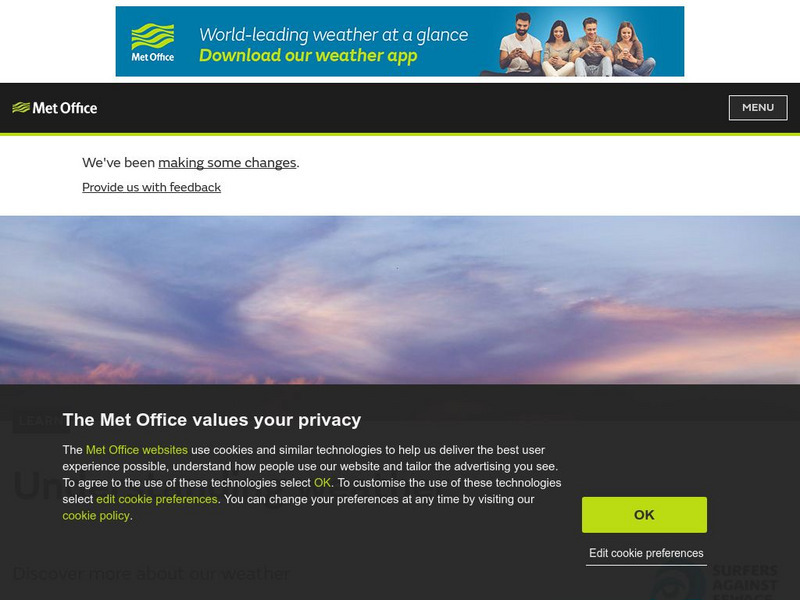TeachEngineering
Teach Engineering: Stormy Skies
Students learn that wind and storms can form at the boundaries of interacting high and low pressure air masses. They learn the distinguishing features of the four main types of weather fronts (warm fronts, cold fronts, stationary fronts...
E-learning for Kids
E Learning for Kids: Science: Antarctica Research Center: Describe Different Weather Patterns
This module provides informational text about weather. Students will learn about precipitation and storm fronts. Students will also learn about different types of storms, including the following: hurricanes, cyclones, and typhoons.
University of Illinois
University of Illinois Urbana Champaign: Surface Features to Consider When Forecasting
This site looks at the important surface features to consider when making a forecast. High pressure and atmospheric pressure is explained. Be sure to use the arrows at the bottom to navigate through this site.
USA Today
Usa Today: How a Low Pressure System Affects Weather
Discusses the fronts and weather patterns associated with low pressure areas.
ClassFlow
Class Flow: Weather Conditions
[Free Registration/Login Required] This flipchart is a beginning of a unit on weather. The flipchart contains information about fronts, air masses, and wind. There is an assessment quiz at the end.
University Corporation for Atmospheric Research
Ucar: Anatomy of a Storm's Clouds
Students analyze cloud data from a storm that crossed the United States in late November 2019. They identify cloud types from photos of the sky in various locations to identify the zonation of clouds across a cold and warm front.
Discovery Education
Discovery Education: Weather Maps
This site provides a lesson plan in which groups of students will each investigate a different type of weather map use for weather forecasting. Also includes discussion questions, extension ideas, and links to additional sites for more...
University Corporation for Atmospheric Research
Ucar: Make a Weather Forecast
Review these tips and learn to make predictions of the weather.
ClassFlow
Class Flow: Weather Maps
[Free Registration/Login Required] This flipchart defines and gives examples of various weather symbols and descriptive words concerning weather patterns. It explains the uses of weather maps and how scientists use these to predict the...
Other
Physical geography.net: Introduction to the Atmosphere
A very detailed description of air masses, how they move and interact, and what weather takes place when this happens.
Ducksters
Ducksters: Earth Science for Kids: Weather Forecasting and Meteorology
On this website, students can learn about weather forcasting and meteorology including cold and warm fronts, high and low pressure systems, fun facts, and technology.









